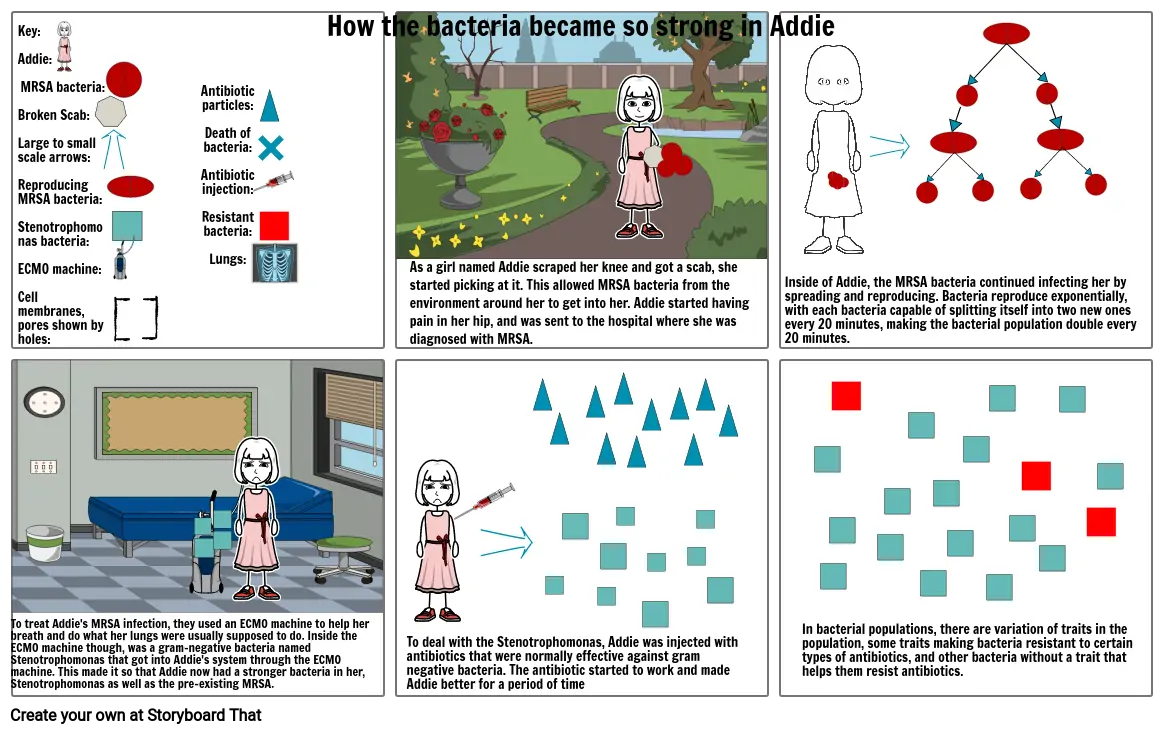How the bacteria became so strong in Addie

Storyboard Text
- Key:Addie:MRSA bacteria:Broken Scab:Large to small scale arrows:Reproducing MRSA bacteria:Stenotrophomonas bacteria:ECMO machine:Cell membranes, pores shown by holes:
- Antibiotic particles:Death of bacteria:Antibiotic injection:Resistant bacteria:Lungs:
- How the bacteria became so strong in Addie
- As a girl named Addie scraped her knee and got a scab, she started picking at it. This allowed MRSA bacteria from the environment around her to get into her. Addie started having pain in her hip, and was sent to the hospital where she was diagnosed with MRSA.
- Inside of Addie, the MRSA bacteria continued infecting her by spreading and reproducing. Bacteria reproduce exponentially, with each bacteria capable of splitting itself into two new ones every 20 minutes, making the bacterial population double every 20 minutes.
- To treat Addie's MRSA infection, they used an ECMO machine to help her breath and do what her lungs were usually supposed to do. Inside the ECMO machine though, was a gram-negative bacteria named Stenotrophomonas that got into Addie's system through the ECMO machine. This made it so that Addie now had a stronger bacteria in her, Stenotrophomonas as well as the pre-existing MRSA.
- To deal with the Stenotrophomonas, Addie was injected with antibiotics that were normally effective against gram negative bacteria. The antibiotic started to work and made Addie better for a period of time
- In bacterial populations, there are variation of traits in the population, some traits making bacteria resistant to certain types of antibiotics, and other bacteria without a trait that helps them resist antibiotics.
Over 30 Million Storyboards Created
No Downloads, No Credit Card, and No Login Needed to Try!
